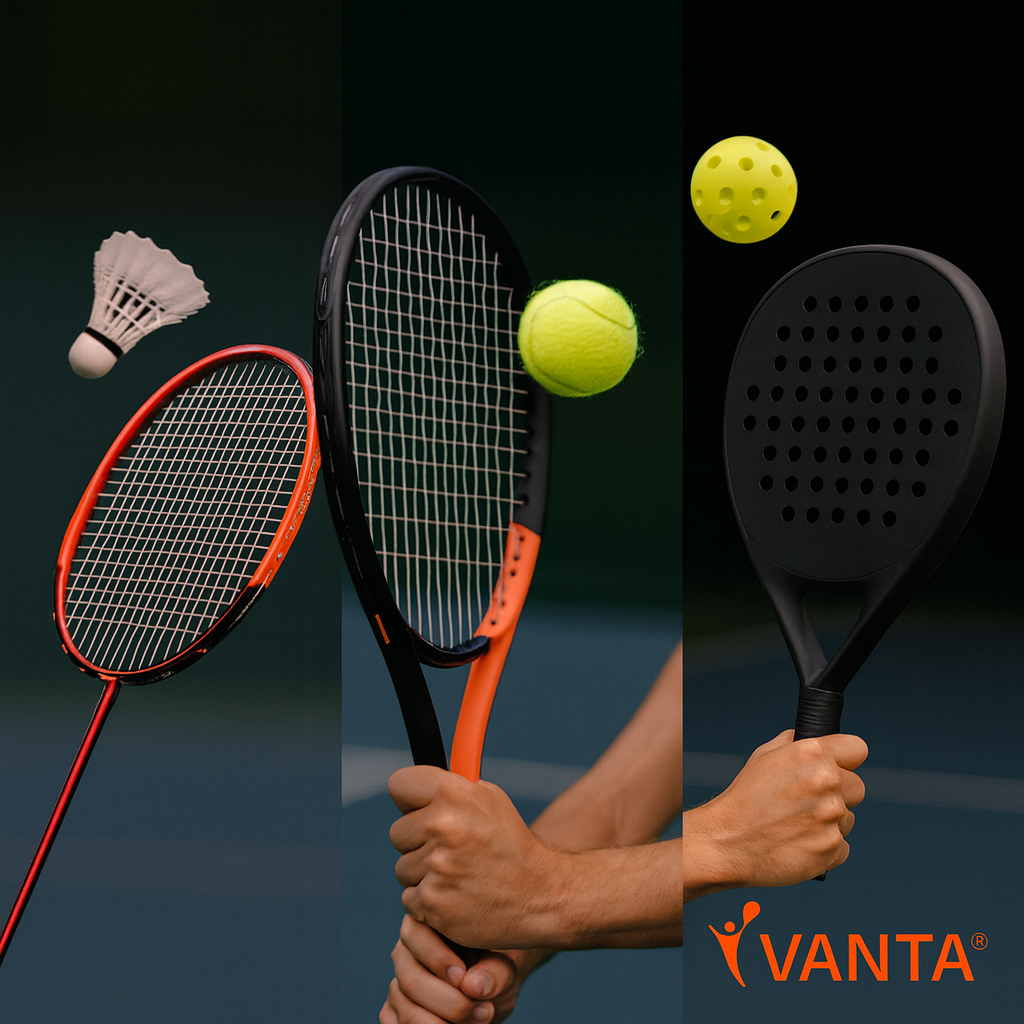
How Tennis & Badminton Skills Transfer to Pickleball
From Badminton to Tennis to Pickleball: How Racket Sports Skills Transfer
Racket sports share many fundamental skills, making the transition from badminton or tennis to pickleball smoother than you might expect. Whether you’re a keen tennis player eyeing pickleball or a badminton convert curious about tennis, understanding which skills transfer helps accelerate improvement and enjoyment.
Summary
| Key Point | Summary |
|---|---|
| Core skills transfer | Hand-eye coordination, footwork, timing adapt well across racket sports |
| Strategy & court awareness | Knowledge of angles, shot selection aids cross-sport success |
| Equipment adjustment | Paddle size, ball speed, and court dimensions require adaptation |
| Common mistakes | Overreliance on old swing techniques and underestimating pickleball’s unique pace |
Why Racket Sports Crossover Works
Racket sports, whether badminton, tennis, or pickleball, revolve around similar principles:
- Hand-eye coordination: Tracking a fast-moving ball or shuttlecock is a universal skill.
- Footwork and positioning: Moving efficiently around the court and anticipating shots.
- Shot technique: Understanding spin, power, and placement.
- Tactical awareness: Using angles and shot selection to outplay opponents.
While each sport has its nuances, the underlying athletic and cognitive skills overlap substantially. This crossover is why many badminton players transition well into tennis or pickleball, and vice versa.
From Badminton to Pickleball: What Transfers?
Badminton players usually excel in quick footwork and wrist control. Pickleball benefits from this precision and rapid reflexes.
Key transferable skills:
- Quick reactions: Badminton’s fast pace sharpens reflexes for pickleball’s rapid exchanges.
- Net play: Comfort at the net with volleys and dinks in pickleball mirrors badminton net battles.
- Deceptive shots: Wrist flicks and disguising your shots are common tactics that carry over.
Areas to adapt:
- Swing size: Pickleball uses larger swings similar to tennis, so adjust from your quick badminton strokes.
- Contact point: Pickleball ball is heavier and slower than shuttlecock, requiring steadier contact.
- Foot placement: Pickleball courts are larger, so movement patterns will change.
Pro Tip: Focus on developing a compact paddle swing to maintain control while utilising your rapid reaction skills.
From Tennis to Pickleball: What’s Different?
Tennis players often have an advantage in pickleball due to powerful groundstrokes and strong court coverage. However, pickleball’s distinct pace and softer ball demand adjustments.
Transferable strengths:
- Stroke mechanics: Forehand and backhand techniques adapt easily to paddle use.
- Serve and return: Tactical variation in serving carries over.
- Court awareness: Movement patterns and positioning are similar, though scaled for pickleball’s smaller court.
Key adjustments:
- Pace control: Pickleball rewards softer, well-placed shots over raw power.
- Volleying: Increased frequency of net play requires more finesse.
- Shot selection: Emphasis on dinks and drop shots rather than sustained baseline rallies.
Common Mistake: Using tennis power and full swings in pickleball can cause errors. Focus on touch and paddle angles.
Skill Transfer Checklist: From Other Racket Sports to Pickleball
| Skill Area | Badminton Advantage | Tennis Advantage | Pickleball Adaptation |
|---|---|---|---|
| Hand-eye coordination | Sharp reaction time | Strong ball tracking | Maintain focus, adjust to slower ball |
| Footwork | Quick, small steps | Lateral movement and court coverage | Blend both for timely positioning |
| Stroke technique | Wrist control and deception | Groundstroke power | Compact paddle movement, touch emphasis |
| Net play | Fast volley reflexes | Strong volleys and blocking | Master dinks and soft net play |
| Tactical awareness | Angle creation and shot deception | Serve variety and baseline strategy | Patience, placement, and shot patience |
Common Mistakes When Switching to Pickleball
- Over-swinging: Using tennis-style big swings leads to loss of control.
- Ignoring dink shots: Underestimating soft shots hinders net play strategy.
- Footwork neglect: Applying badminton foot speed but ignoring pickleball court size causes poor positioning.
- Serves confusion: Serving techniques differ; adapting to pickleball’s underhand serve is crucial.
FAQs
Q: How long does it usually take for a tennis player to get comfortable with pickleball?
A: Most tennis players can grasp the basics of pickleball within a few sessions, but mastering touch and net play usually takes several weeks of regular practice.
Q: Can badminton players use their wrist flicks effectively in pickleball?
A: Yes, badminton players’ wrist control aids in deceptive shots and quick volleys, but they’ll need to adjust to a heavier paddle and ball.
Q: Is it better to start pickleball with a tennis or badminton background?
A: Both backgrounds provide strong foundations, but tennis players might adapt quicker to court size and paddle swings, while badminton players generally excel in quick reflexes and net play.
Racket sports crossover offers a great advantage for anyone transitioning between badminton, tennis and pickleball. By understanding which skills to transfer and where to adapt, you can enjoy faster development and richer gameplay across these sports.
Transitioning from tennis or badminton to pickleball is all about refining your timing, adapting to the smaller court, and finding that balance of power and precision. If you’re just starting out, our Pickleball for Beginners guide walks you through the fundamentals, while Pickleball Serves 101 helps you build confidence from the very first shot. Want to understand how these skills translate across racquet sports? Explore Padel vs Pickleball: What’s the Difference? for more insight. Find your adVANTAge.
